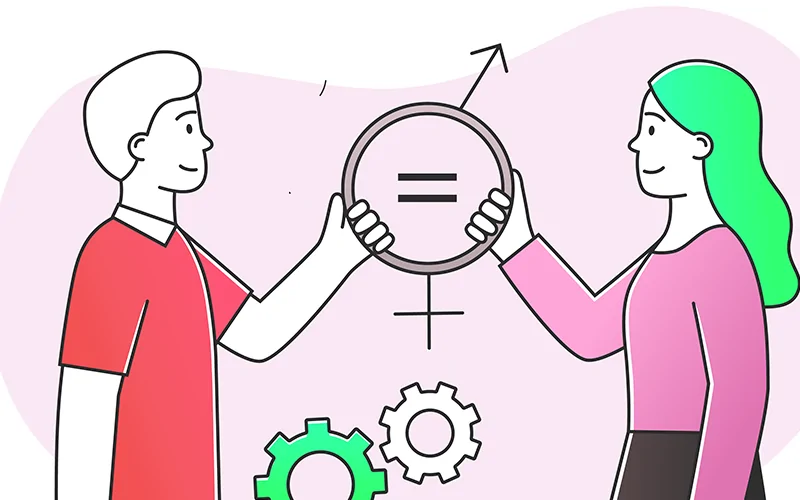
Gender issues usually refer to the position of men and women in the society and the nature of their relationship. Gender divisions are based upon the traditional roles of men and women in the society with respect to production and reproduction. Other factors like culture, religion and ideology also influences the above gender roles and their divisions.
Two Main Perspectives of Gender Issues:
First is the biological nature of men and women. Both have unique, fixed and unchangeable qualities.
Second is the nature of their positions in society. This aspect is not fixed and is influenced by social situations and interactions.
Also read | Concept of Social Participation.
Therefore, gender differences between men and women’ differ through ti me; across various countries and also within a country. Though biologically determined roles have remained the same, socially and culturally determined roles have changed and can also be changed and influenced through various means.
As per India’s Census of 2001, women form 48% of our total population. Therefore, India’s development is quite dependent on the improvement of women’s socio-economic condition and status.
Indian Constitution also provides safeguards to women through various rights and privileges. For instance: Article 14 confers equal rights and opportunities to men and women in political, economic and social spheres, besides many other rights.
Also read | What is Public Interest Litigation (PIL)?
These constitutional privileges have been supported by several government policies, programmes and schemes in favor of women. A recent addition has been the Protection of Women from Domestic Violence Bill 2005, Besides, there has also been a demand to reserve 33 per cent seats for women in the Parliament. The 73rd Constitutional Amendment has already provided 33 per cent reservation for women in panchayats.
Five Year Plan on Gender Issues:
The First Five Year Plan to the Fifth Plan ‘welfare’ was the main focus as-far as women were concerned. However, the Sixth Plan had a specific approach involving three main areas of women’s health, education and employment.
The Seventh Five Year Plan continued this trend with a focus on increasing the social and economic status of women and brining them into the national mainstream.
Also read | Define the term Bureaucracy.
The Eight Plan emphasized on human development that further enabled advancement of women’s development. Women were included in all development sectors so that they could benefit from the process of an overall, inclusive social development.
The Ninth Five Year Plan focused on two areas-women’s empowerment and convergence of services available in both women-specific and women-related sectors.
National Policy for Empowerment of Women was also formulated during this plan. The government launched several initiatives that helped women set up self-reliant; self-help groups with access to easy credit/finance.
Also read | What is Delegation?
However, the Tenth Plan has approached this issue differently. Besides continuing the process of women’s empowerment, it also highlighted that other initiatives related to women’s development would be given definite, time-bound targets, so that more concrete result oriented development can be achieved.





